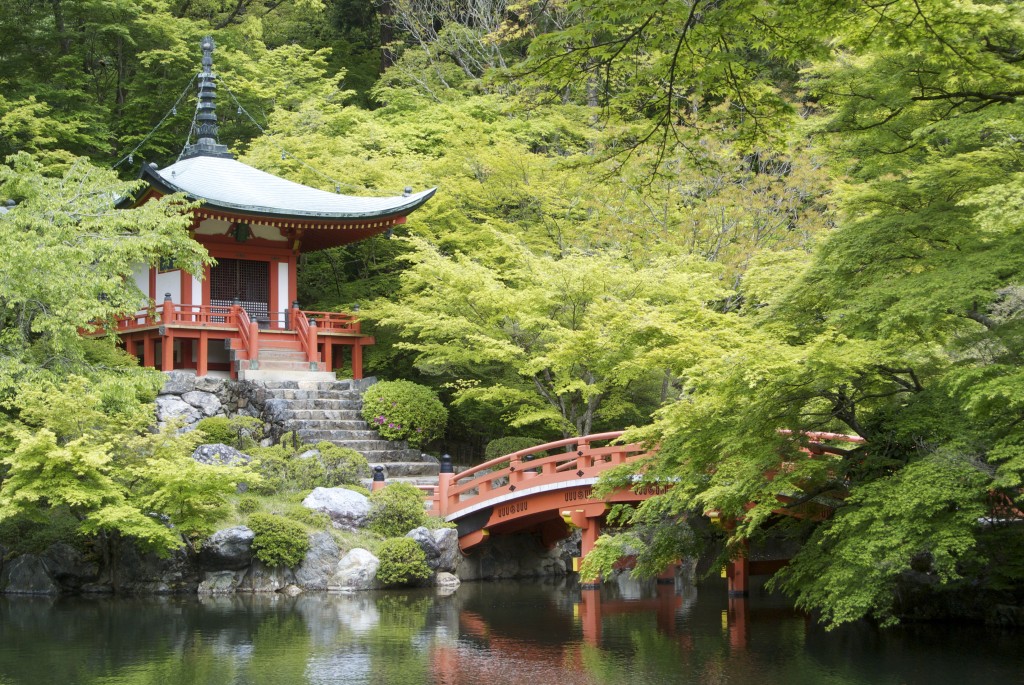
The Benten Pond at the World Heritage site of Kyoto's Daigo-ji
Daigo-ji is one of Kyoto’s many treasures, and deserves to be better known. It’s a Shingon temple with an upper and lower part on a hill one hour’s walk from each other. Amongst the many structures, it boasts a wonderful pagoda, a picturesque Benten pond, and a striking Momoyama garden (in a subtemple called Sambo-in). As is usual with Shingon temples, it has protective Shinto shrines – in Daigo-ji’s case, rather a lot of them. Some are simple hokora (small shrines), but some are substantial.
This prompts a number of questions. Are they included in the 80,000 or 90,000 shrines commonly cited as the total number in Japan? Who looks after them and in what way? And can we categorise them as World Heritage shrines – according to what I understand, the whole of Daigo-ji is included in the World Heritage registration, which means the shrines are too. So that would add a good number to the list of W.H. shrines, because I can recall passing at least five or six on my last visit.
Because of its location, Daigo-ji is not as visited as some of Kyoto’s other sites, yet within its wooded grounds are 18 National Treasures. Most famous is the Sanboin subtemple with its magnificent garden. Amongst the other attractions are an unusually well-stocked Treasure House, Kyoto’s oldest standing structure (a pagoda from 951), as well as a picturesque pond popular with photographers. For those who wish to escape the crowds, here just 20 minutes from downtown is an opportunity to hike in the hills while enjoying World Heritage properties.
The temple was founded in 874 by a monk of the Shingon sect after a spring near the summit was revealed to him in a vision. The building he erected became the basis of Upper Daigo. Imperial patronage led in 926 to more substantial structures at the base, which formed Lower Daigo. Though the complex was destroyed on several occasions by fire, a tenth-century pagoda survived together with the paintings it contained.
In the late sixteenth century the languishing temple was restored, thanks to the ruler, Toyotomi Hideyoshi. He lavished particular attention on Sanbo-in, ordering construction of an unusual garden based around a pond which used ‘dry landscape’ techniques. Boulders were brought from around Japan, some with a unique history, and arranged with precise care to produce what can only be described as a rock extravaganza.
The subtemple was used by Hideyoshi in 1598 as the base for an extravagant cherry-blossom event, when accompanied by some 1000 people he was carried up the slopes to admire the views (which on a clear day extend as far as Osaka). It’s an occasion recalled each spring by the temple in a colourful recreation of the procession – evidence that Daigo-ji’s treasures are not just in the material realm.
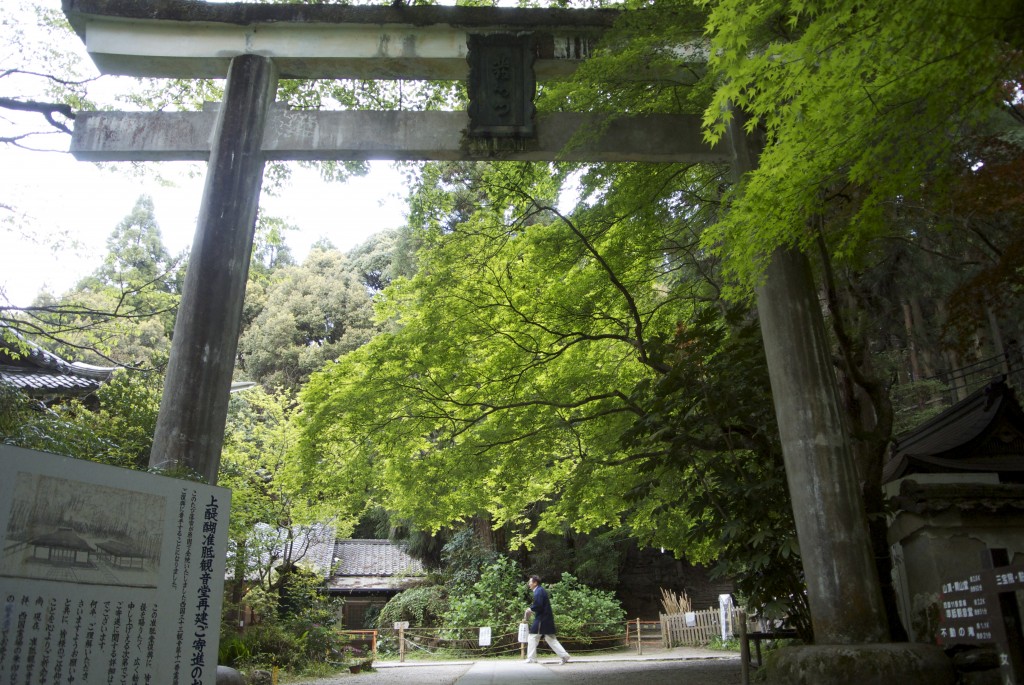
Gateway to Upper Daigo; from here it's one hour walk up the hill to the other part of the temple
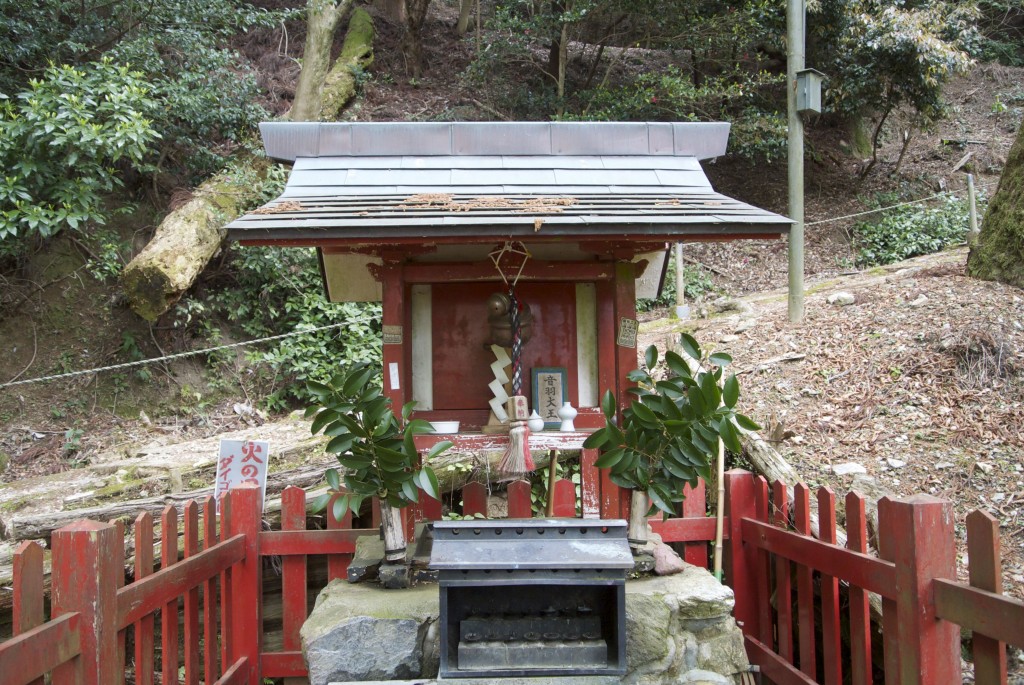
One of the wayside shrines that are passed on the path leading up to Upper Daigo
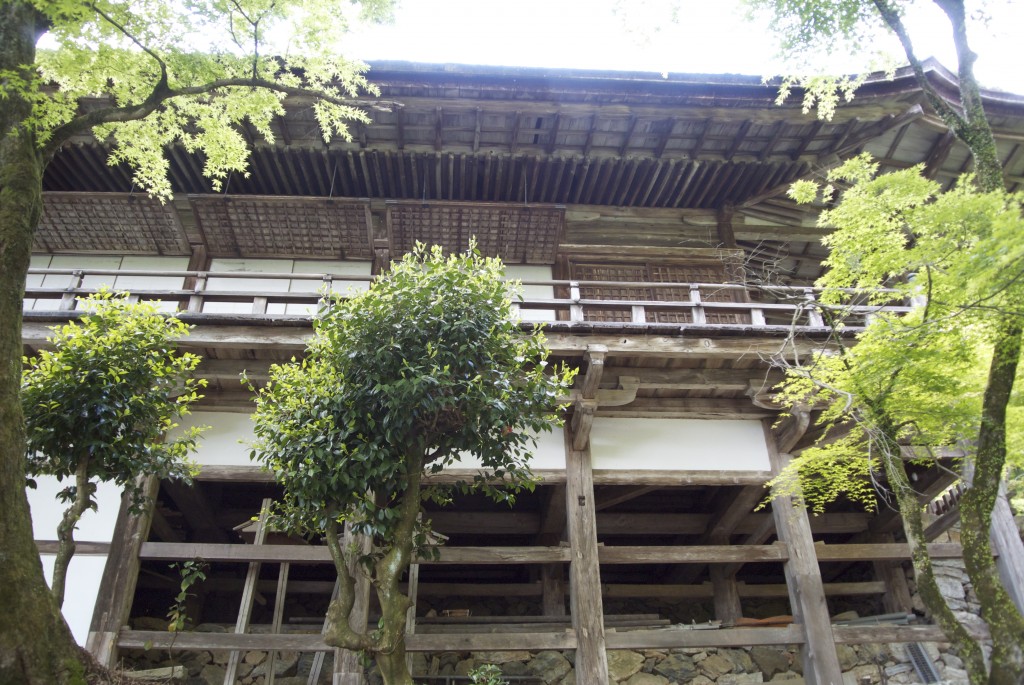
The Seiryudo (Pure Dragon Hall), a magnfiicent platform-style Worship Hall that is now a National Treasure. It was first built in 1088, rebuilt in 1434, for worship of the holy spring that led to the foundation of the temple by a monk called Rigen Daishi.
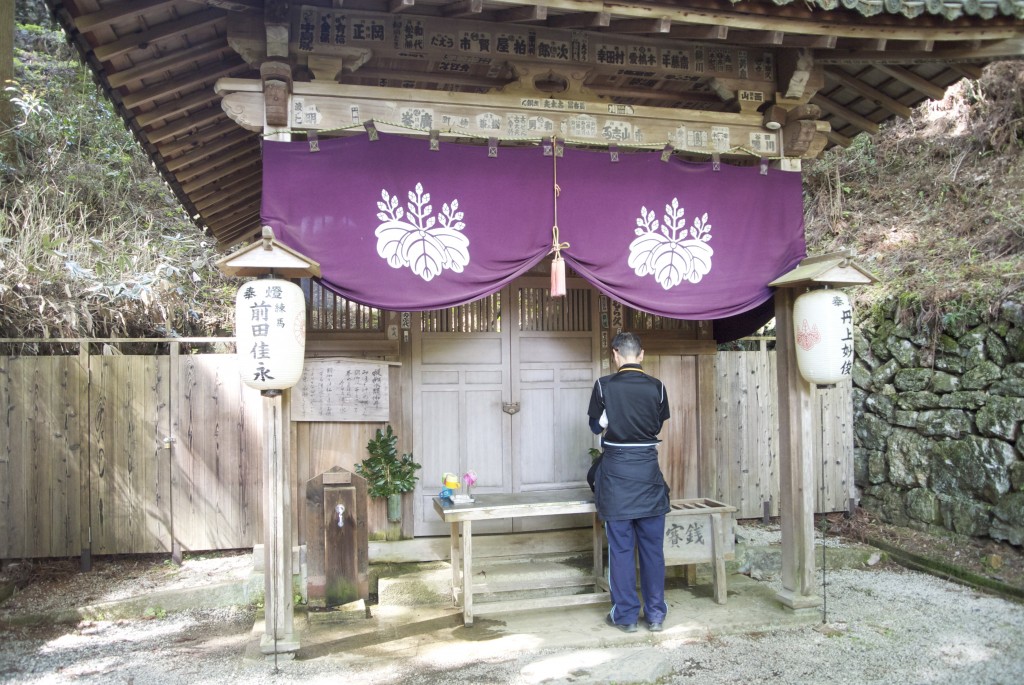
Worship at the holy spring with which Daigo-ji originated
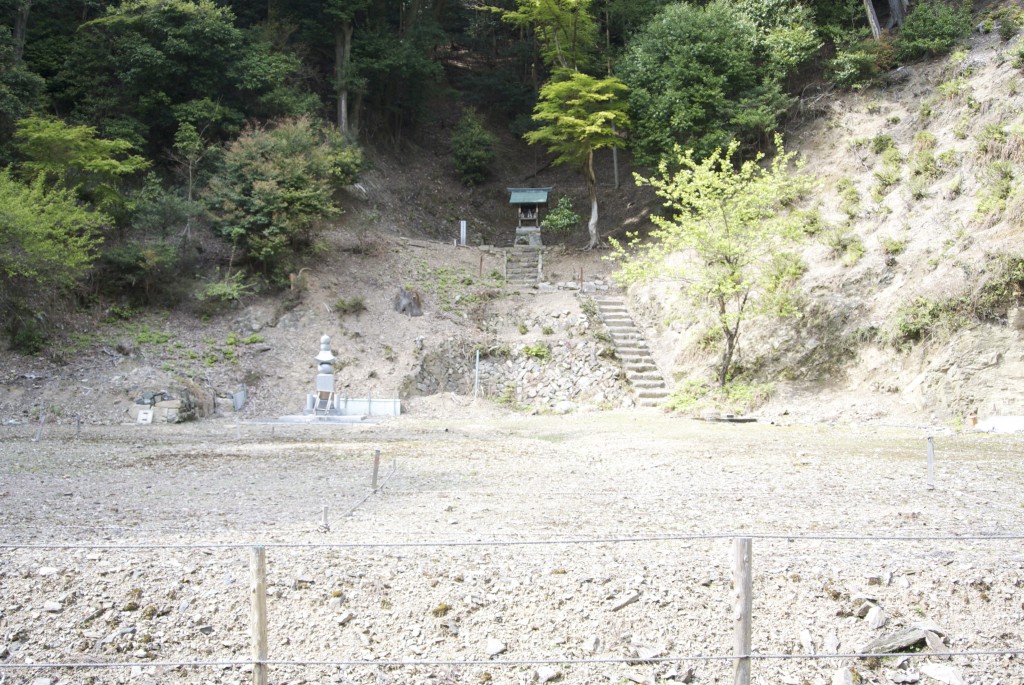
A protective shrine that didn't do its job - this small shrine was the protector for a large temple building that stood in the space before it - and which recently burnt down
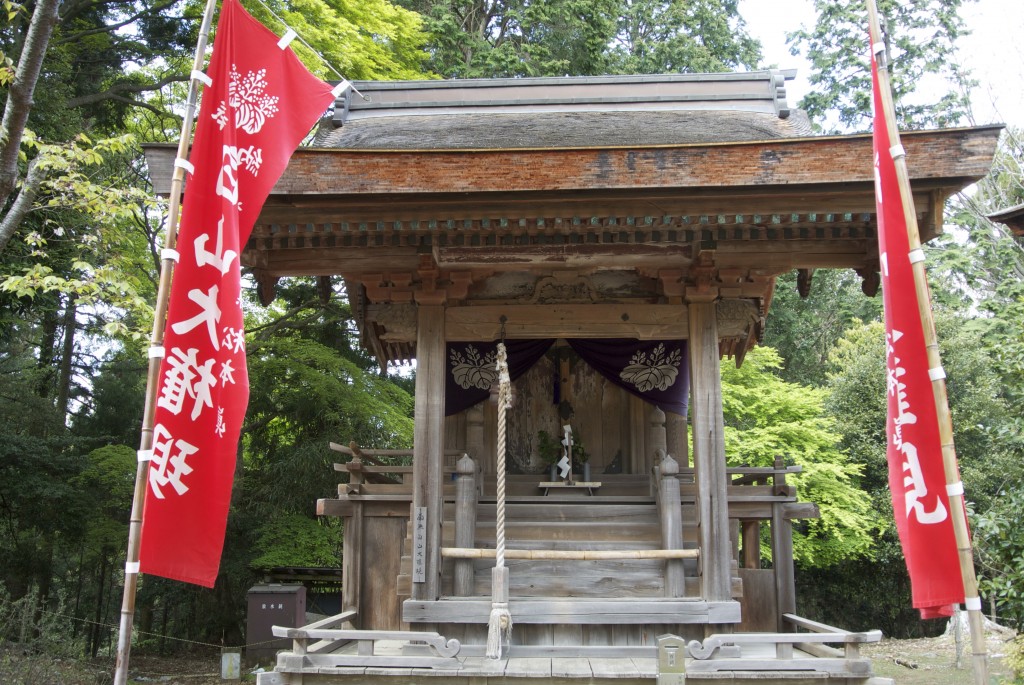
Shrine at Upper Daigo, amidst the shugendo buildings. The temple has close connections with practitioners of mountain austerities.
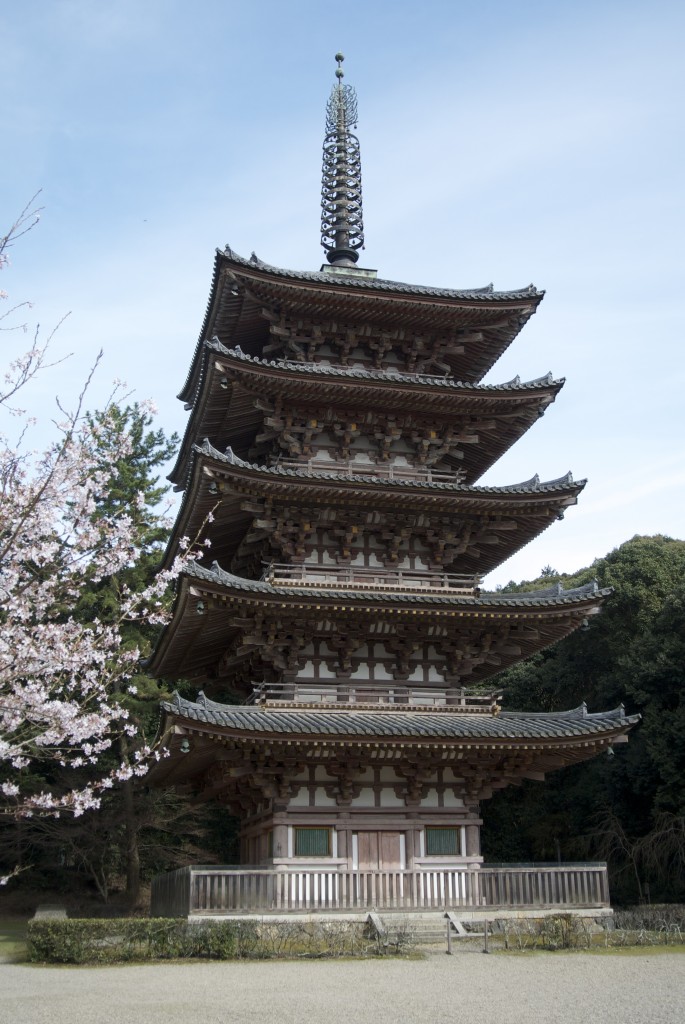
Daigo-ji's trademark tenth-century pagoda, oldest one in Kyoto

Leave a Reply